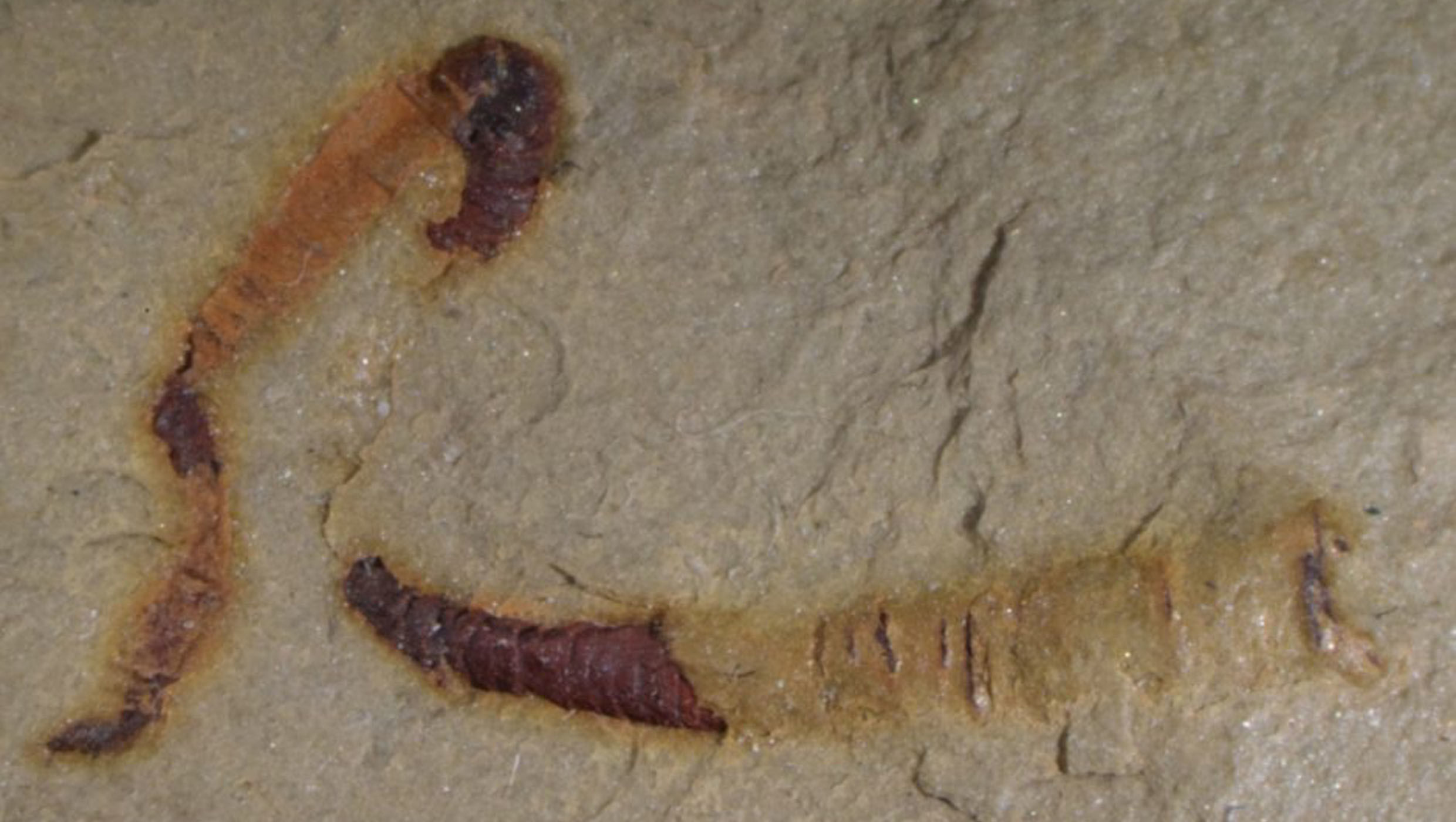Create a free profile to get unlimited access to exclusive videos, sweepstakes, and more!
Oldest guts ever unearthed reveal an even weirder life-form

If you think the most ancient preserved animal brain and human brain are bizarre, since they defied decomposition for tens of thousands of years, things just got even weirder.
The oldest fossilized guts ever have been unearthed by a team of scientists at the University of Missouri. Oh, and in this case, “old” means 500 million years — aka half a billion. That makes those ancient brains seem positively fresh.
“Not only are these structures the oldest guts yet discovered, but they also help resolve the long-debated evolutionary positioning of this important fossil group,” said team lead Jim Schiffbauer, an MU associate professor of geological sciences, in a study recently published in Nature Communications.
The guts belong to a group of organisms known as a cloudinomorph, which lived during the alien Ediarcan period, right before the Cambrian Explosion that spawned the predecessors of many life-forms on Earth. What exactly a cloudinomorph is has been a biological debate for years. Is it a coral? A worm? A sponge?
“These fossils fit within a very recognizable group of organisms — the cloudinids … we can now say that their anatomical structure appears more worm-like than coral-like,” said Schiffbauer.
Cloudinomorphs have been a mystery since fossils first emerged. These creatures could have literally been anything. Some scientists have even suggested that they have their own phylum, Cloudinidae. Anthozoan cniderians like corals and sea anemones appear similar, making Cnidaria one of the existing phylums cloudinomorphs were suspected to belong to. Much like cloudinomorph fossils that have been found all over the world, these are animals with flower-like tentacles blooming from a hard outer shell. When cniderians die, they leave behind those shells, which in the case of corals and sea fans, can take some pretty unreal formations. Cloudinomorphs could have been pre-corals, but not true corals. Those didn’t start to appear until the first dinosaurs started trampling Earth in the middle Triassic period.
Annelids or Annelida were the other most likely phylum for cloudinomorphs to fall into. These are segmented worms, which are also the most complex worms that exist and more complex than cnidarians. Bilateral symmetry is a feature of all worms, and annelids also have segmented bodies that are divided into repeating segments with the same innards. Worms also have an orifice at either end, as opposed to cniderians, whose mouth doubles as their anus (gross but true). This is where the fossilized guts gave away a critical clue about what cloudinomorphs most likely were. Because the guts of the cloudinomorph fossil studied were still intact, scientists were able to tell that both ends had an orifice.
“To our knowledge, the structures reported herein are not only the first recognizable soft tissues in cloudinomorphs, but also the oldest guts yet described in the fossil record,” Schiffbauer and colleagues said.
Schiffbauer’s team believes that cloudinomorphs were most likely polychaete annelids. Polychaete worms have some sort of bristles on each of their segments. The closest extant creatures which recall these ancient creepy-crawlies are sessile tube worms. Tube worms have a hard outer shell which could, at least in fossil form, make them easy to confuse with cniderians. Sessile tube worms stay in one place, though soft tissues, such as the cloudinomorph’s supposed tentacles, still move around to grab food. The showy Christmas tree worm is a sessile tube worm. So are giant tube worms, which look like enormous lipsticks and live around deep-sea hot-water vents.
Fossilized external tubes were once the only remains of cloudinomorphs that could hint at what phylum they belonged to until the preserved guts surfaced. Micro-CT scans demystified more about these animals by revealing the soft tissues that had survived. These “one-way-through-guts”, as Schiffbauer’s team described them, were not just “evidence for establishing these fossils as definitive bilaterians,” but also had “implications for the long-debated phylogenetic position of the broader cloudinomorphs.” Whether they belong to Annelida or their own separate phylum is still a question that needs more probing, but it gives us a more insight into unusual pre-Cambrian fauna.
Creatures like tube worms are one of the reasons NASA is so interested in sending a mission to Europa, which is thought to have hot-water vents in the depths of its extraterrestrial oceans. You never know what might be lurking in there.
(via University of Missouri/Nature Communications)



























